Portrait of the Duke of York may refer to:
- Portrait of Prince Edward, Duke of York (1764) by Pompeo Batoni
- Portrait of Prince Frederick, Duke of York (1816) by Thomas Lawrence
Portrait of the Duke of York may refer to:
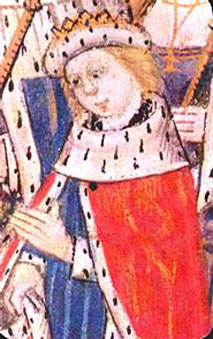
Edward V was King of England from 9 April to 25 June 1483. He succeeded his father, Edward IV, upon the latter's death. Edward V was never crowned, and his brief reign was dominated by the influence of his uncle and Lord Protector, the Duke of Gloucester, who deposed him to reign as King Richard III; this was confirmed by the Titulus Regius, an Act of Parliament which denounced any further claims through Edward IV's heirs by delegitimising Edward V and all of his siblings. This was later repealed by Henry VII, who wished to legitimise his reign by marrying Elizabeth of York, Edward V's eldest sister.

George V was King of the United Kingdom and the British Dominions, and Emperor of India, from 6 May 1910 until his death in 1936.

Prince Philip, Duke of Edinburgh, was the husband of Queen Elizabeth II. As such, he was the consort of the British monarch from his wife's accession on 6 February 1952 until his death in 2021, making him the longest-serving royal consort in history.

Prince Andrew, Duke of York is a member of the British royal family. He is the third child and second son of Queen Elizabeth II and Prince Philip, Duke of Edinburgh, and a younger brother of King Charles III. Andrew was born second in the line of succession to the British throne and is now eighth, and the first person in the line who is not a descendant of the reigning monarch.

George Villiers, 1st Duke of Buckingham, KG, was an English courtier, statesman, and patron of the arts. He was a favourite and self-described "lover" of King James VI and I. Buckingham remained at the height of royal favour for the first three years of the reign of James's son, King Charles I, until he was assassinated.

Edward of Westminster, also known as Edward of Lancaster, was the only child of Henry VI of England and Margaret of Anjou. He was killed aged seventeen at the Battle of Tewkesbury.

Princess Alice, Duchess of Gloucester was a member of the British royal family. She was the wife of Prince Henry, Duke of Gloucester, the third son of King George V and Queen Mary. She was the mother of Prince William of Gloucester and Prince Richard, Duke of Gloucester.

Prince Edward, Duke of Kent and Strathearn was the fourth son and fifth child of King George III and Queen Charlotte. His only child, Victoria, became Queen of the United Kingdom 17 years after his death.

Prince Frederick, Duke of York and Albany was the second son of George III, King of the United Kingdom and Hanover, and his consort Charlotte of Mecklenburg-Strelitz. A soldier by profession, from 1764 to 1803 he was Prince-Bishop of Osnabrück in the Holy Roman Empire. From the death of his father in 1820 until his own death in 1827, he was the heir presumptive to his elder brother, George IV, in both the United Kingdom of Great Britain and Ireland and the Kingdom of Hanover.

Prince Henry, Duke of Gloucester was a member of the British royal family. He was the third son of King George V and Queen Mary, and was a younger brother of kings Edward VIII and George VI. He served as Governor-General of Australia from 1945 to 1947, the only Prince to hold the post.
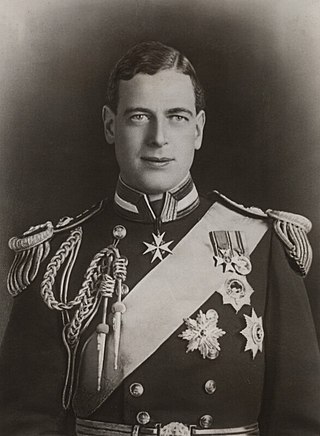
Prince George, Duke of Kent was a member of the British royal family, the fourth son of King George V and Queen Mary. He was a younger brother of kings Edward VIII and George VI. Prince George served in the Royal Navy in the 1920s and then briefly as a civil servant. He became Duke of Kent in 1934. In the late 1930s he served as an RAF officer, initially as a staff officer at RAF Training Command and then, from July 1941, as a staff officer in the Welfare Section of the RAF Inspector General's Staff. He was among fourteen of the fifteen crew and passengers killed in the Dunbeath air crash on 25 August 1942.
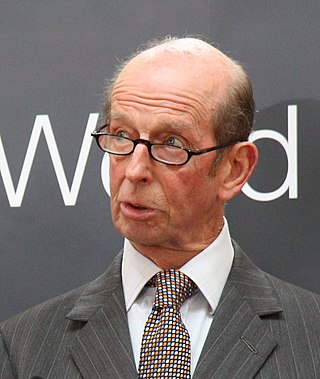
Prince Edward, Duke of Kent is a member of the British royal family. The elder son of Prince George, Duke of Kent, and Princess Marina of Greece and Denmark, he is a grandson of George V, nephew of Edward VIII and George VI, and first cousin of Elizabeth II. Edward's mother was also a first cousin of Prince Philip, Duke of Edinburgh, consort of Elizabeth II, making him both a second cousin and first cousin once removed to Charles III. He is 41st in the line of succession to the British throne.
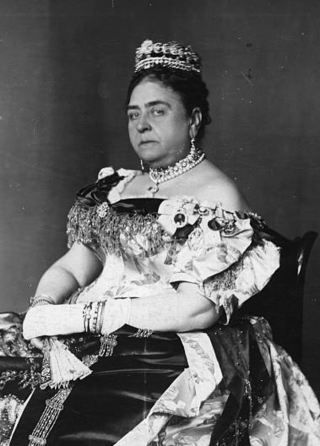
Princess Mary Adelaide of Cambridge, later known as the Duchess of Teck, was a member of the British royal family. She was one of the first royals to patronise a wide range of charities and was a first cousin of Queen Victoria.
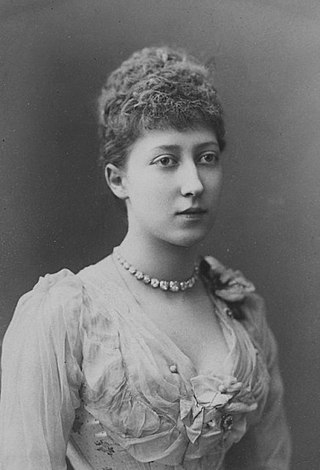
Louise, Princess Royal and Duchess of Fife was the third child and eldest daughter of King Edward VII and Queen Alexandra of the United Kingdom; she was a younger sister of King George V. Louise was given the title of Princess Royal in 1905. Known for her shy and quiet personality, Louise remained a low-key member of the royal family throughout her life.

Prince Edward, Duke of York and Albany was a younger brother of George III of the United Kingdom and the second son of Frederick, Prince of Wales, and Princess Augusta of Saxe-Gotha.
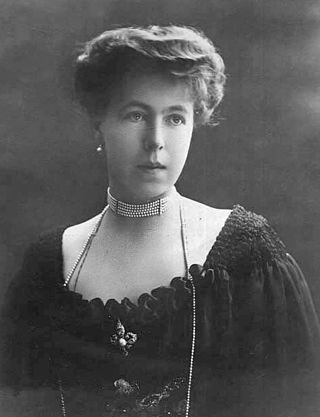
Princess Alexandra of Saxe-Coburg and Gotha was the fourth child and third daughter of Alfred, Duke of Saxe-Coburg and Gotha, and Grand Duchess Maria Alexandrovna of Russia. As the wife of Ernst II, she was Princess consort of Hohenlohe-Langenburg. She was a granddaughter of both Queen Victoria of the United Kingdom and Tsar Alexander II of Russia.
Ernest Augustus or Ernst August may refer to:

Princess Frederica Charlotte of Prussia was a Prussian princess by birth and a British princess by marriage. She was the eldest daughter of King Frederick William II of Prussia and the wife of Prince Frederick, Duke of York and Albany, second son of King George III of the United Kingdom.
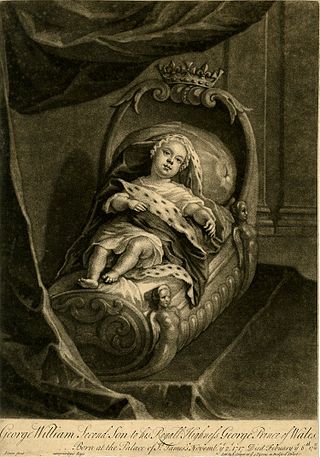
Prince George William of Great Britain was a member of the British royal family, second son of the Prince and Princess of Wales. He died aged 3 months, 4 days. A post-mortem was conducted to prove that he died from disease and not separation from his mother. He was buried at Westminster Abbey.

Edward VIII, later known as the Duke of Windsor, was King of the United Kingdom and the Dominions of the British Empire, and Emperor of India, from 20 January 1936 until his abdication in December of the same year.